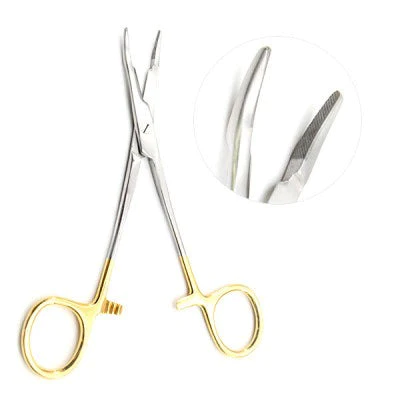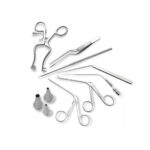Otorhinolaryngology ENT Surgical Instrument Kit Good Quality Affordable
Made from durable, medical-grade stainless steel, each tool offers reliability, longevity, and ease of sterilization, ensuring optimal performance in clinical settings. this ENT instrument kit delivers excellent value without compromising on quality, making it a must-have for healthcare professionals seeking an affordable yet dependable surgical toolset.
Category: ENT INSTRUMENTS SETS
Tags: EarNoseThroatInstruments, ENTClinicSupplies, ENTDoctorsTools, ENTKits, ENTMedicalDevices, ENTProcedureKits, ENTSurgeonEssentials, ENTSurgeonTools, ENTSurgerySupplies, ENTSurgicalEquipment, MedicalGradeInstruments, NTSurgicalInstruments, OtorhinolaryngologyEquipment, OtorhinolaryngologyTools, SurgicalInstrumentSet
Description
Description:
Otorhinolaryngology (ENT) Surgical Instrument: Precision Tools for Ear, Nose, and Throat Procedures
Overview
ENT (Ear, Nose, and Throat) Otorhinolaryngology. ENT Surgical Instruments are critical equipment for otolaryngology. This specialty focuses on the diagnosis and treatment of head and neck problems such as ear infections, nasal blockages, and throat issues. Given the accuracy necessary in ENT procedures, these tools are meticulously designed to ensure quality, usefulness, and patient safety.
Types of ENT Surgical Instruments and Their Uses
- Ear Instruments
- Ear Specula: These are used to visually examine the ear canal, which aids in operations like earwax removal and infection diagnosis.
- Myringotomy Instruments: Myringotomy equipment, such as tiny knives and suction tubing, are essential for making accurate incisions in the eardrum to drain fluid.
- Otoscope: A instrument used in diagnostic and surgical settings to visualize the ear canal and eardrum.
- Nose Instruments
- Nasal Specula:These devices widen the nostrils, giving surgeons easier access during procedures such as polyp removal and nasal fracture repair.
- Nasal Forceps: Nasal forceps are commonly used for polypectomy and septoplasty treatments, and they come in a variety of shapes and sizes to securely manipulate nasal tissues.
- Suction Tubes: Suction is essential for maintaining a clear surgical field, particularly during nose procedures when blood or mucus might obscure visibility.
- Throat Instruments
- Laryngoscopes: Laryngoscopes are used to inspect the larynx and are necessary for treatments involving vocal cord disorders, tumors, or blockages.
- Tonsil Scissors and Forceps: These are required for tonsillectomy operations, which are meant to carefully cut and remove tonsils.
- Tongue Depressors and Suction Devices: These devices aid to stabilize and regulate visibility during throat procedures, assisting with foreign object removal and biopsy sample.
Benefits of High-Quality ENT Instruments
- Enhanced Precision and Safety
High-quality ENT tools made of lasting materials, such as stainless steel, enable accurate movements. This is critical in procedures involving delicate structures, where even a tiny slip might have serious consequences. Quality tools provide sharpness, balance, and control, which are critical for effective ENT treatments. - Durability and Resistance to Corrosion
Because Otorhinolaryngology ENT Surgical Instrument equipment are frequently sterilized and subjected to high levels of stress, materials such as surgical-grade stainless steel are critical to their longevity and performance. These tools are built to resist multiple sterilization processes, keeping them sharp, effective, and rust-free over time. - Comfort and Ergonomics for Surgeons
Because ENT procedures can be time-consuming, ergonomics are frequently considered while designing instruments. Comfortable grips and lightweight materials aid to prevent hand fatigue, allowing surgeons to work with greater precision over longer durations.
Maintenance and Care Tips for ENT Surgical Instruments
- Regular Cleaning and Sterilization
ENT tools should be cleaned soon after use to avoid residue buildup. A light enzymatic cleaning is indicated, followed by sterilization using autoclaving or chemical techniques, depending on the instrument’s needs. - Routine Inspection for Wear and Tear
Regular inspection of ENT devices can help to avoid complications during surgery. Hinges, blades, and tips should be examined on a regular basis to ensure they are sharp and aligned properly. Instruments with evidence of corrosion or dulling should be professionally maintained or replaced. - Proper Storage
To keep ENT tools in good condition, store them in a dry, sterile environment. Using protective cases for delicate tools with sharp edges or fine tips can help to avoid harm.
Applications Across ENT Specialties
- Otology (Ear Surgery)
Ear specula, curettes, and micro-forceps are popular tools used in otology to treat infections, hearing impairments, and ear damage. - Rhinology (Nose Surgery)
Nasal specula, scissors, and forceps are crucial instruments for evaluating and treating sinusitis, nasal blockages, and other nasal disorders during surgery. - Laryngology (Throat Surgery)
Specialized devices used in throat surgeries include laryngoscopes, which allow access to the vocal cords, and tonsil forceps, which are used in procedures involving the tonsils and adenoids.
Conclusion
ENT surgical instruments are highly specialized tools used in otorhinolaryngology. These equipment, which prioritize precision, comfort, and durability, allow surgeons to conduct complex procedures with more accuracy and less risk to the patient. High-grade ENT tools, when properly maintained and made of excellent materials, are investments that improve patient outcomes, speed surgical procedures, and complement ENT doctors’ skills.
| Otorhinolaryngology ENT Surgical Instrument Kit | |||
| No. | Description | Qty | |
| 1 | Haemostatic Forceps, straight, 125 mm, Halstead | 2 | |
| 2 | Haemostatic Forceps, curved, 140 mm, Crile | 2 | |
| 3 | Haemostatic Forceps, curved, 160 mm, PEAN | 2 | |
| 4 | Needleholder, 140 mm, without groove | 1 | |
| 5 | Tongue Forceps, 170 mm | 1 | |
| 6 | Scalpel Handle No. 4 | 1 | |
| 7 | Scalpel Handle No. 7 | 1 | |
| 8 | Surgical Scissors, 140 mm, sharp/sharp, straight | 1 | |
| 9 | Surgical Scissors, 140 mm, blunt/blunt, curved | 1 | |
| 10 | Dissecting Forceps, 125 mm | 6 | |
| 11 | Mouth gag | 1 | |
| 12 | Nasal speculum,150×28 | 1 | |
| 13 | Double ended probe 120mm | 1 | |
| 14 | Tongue depressor, 160mm | 1 | |
| 15 | Dental Tweezers 160 curved | 1 | |
| Total 23pcs instruments In Kit | |||
Reviews (0)
Be the first to review “Otorhinolaryngology ENT Surgical Instrument Kit Good Quality Affordable” Cancel reply
Shipping & Delivery


MAECENAS IACULIS
Vestibulum curae torquent diam diam commodo parturient penatibus nunc dui adipiscing convallis bulum parturient suspendisse parturient a.Parturient in parturient scelerisque nibh lectus quam a natoque adipiscing a vestibulum hendrerit et pharetra fames nunc natoque dui.
ADIPISCING CONVALLIS BULUM
- Vestibulum penatibus nunc dui adipiscing convallis bulum parturient suspendisse.
- Abitur parturient praesent lectus quam a natoque adipiscing a vestibulum hendre.
- Diam parturient dictumst parturient scelerisque nibh lectus.
Scelerisque adipiscing bibendum sem vestibulum et in a a a purus lectus faucibus lobortis tincidunt purus lectus nisl class eros.Condimentum a et ullamcorper dictumst mus et tristique elementum nam inceptos hac parturient scelerisque vestibulum amet elit ut volutpat.

































Reviews
There are no reviews yet.